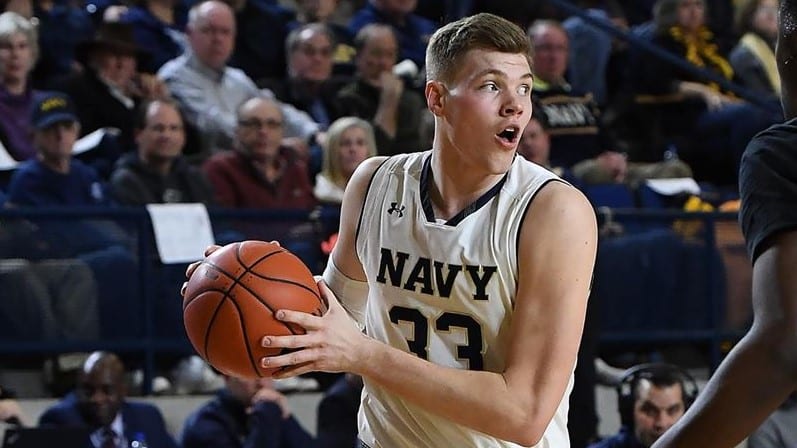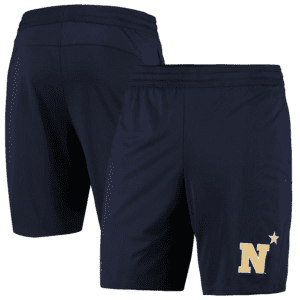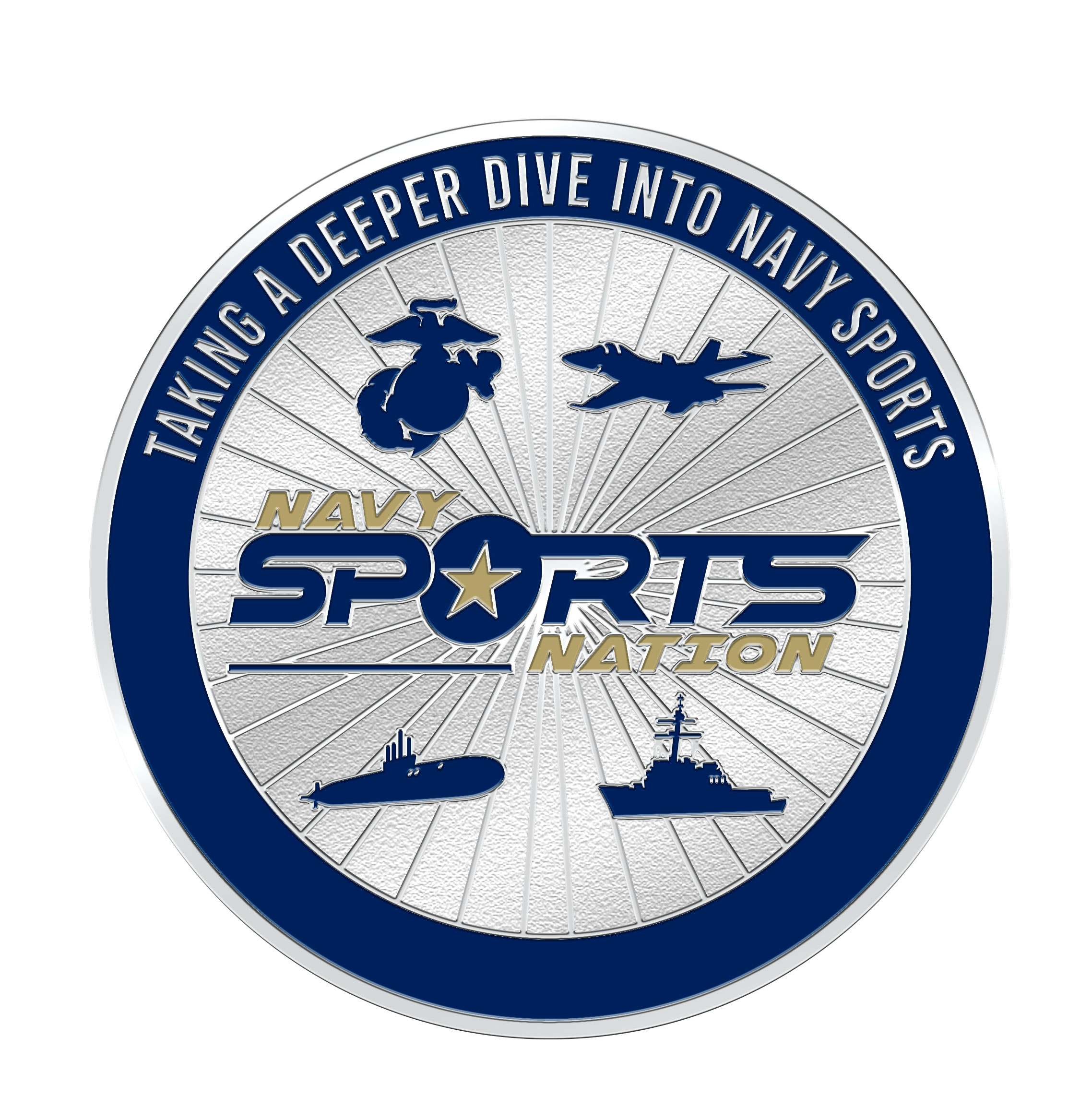Mastering “Swing”: How Dan Lyons Is Using His Rowing Experience to Build High Performing Teams in the Business World
A little over two months ago, I wrote a feature on the Navy Rowing team winning the King’s Cup at last year’s Henley Royal Regatta. It was an amazing performance against elite competition. And the achievement placed the Navy rowing program squarely onto the international stage for first time in decades.
The story turned out to be one of our most popular to date. So today, we’re going to do something different in the Navy Sports Nation. And I’d like to thank my classmate Tom Callahan for the suggestion. This will be the first in what I hope to be a series of “Where Are They Now?” interviews focusing on former Naval Academy athletes. We will discuss their sports experience at Annapolis and the impact it had on their future careers.
Since the King’s Cup feature was so popular, I thought it would be interesting to reach out to a Naval Academy graduate with a similar experience to learn what that was like firsthand. So, let’s get started.
Welcome, Dan Lyons
NSN: Today, I’m very excited to welcome Dan Lyons to the Navy Sports Nation. Dan is a 1981 Naval Academy graduate, and he was a member of the Navy Rowing team. He’s also the Founder and President of Team Concepts, one of the most innovative consulting firms I’ve ever had the pleasure of working with. We’ll get into that a little bit later. I reconnected with Dan recently and sent him the King’s Cup story. That’s what kick started this whole project. Dan, thanks for taking the time to join us today.
DL: Thank you Karl. It’s my pleasure, and I look forward entire experience.
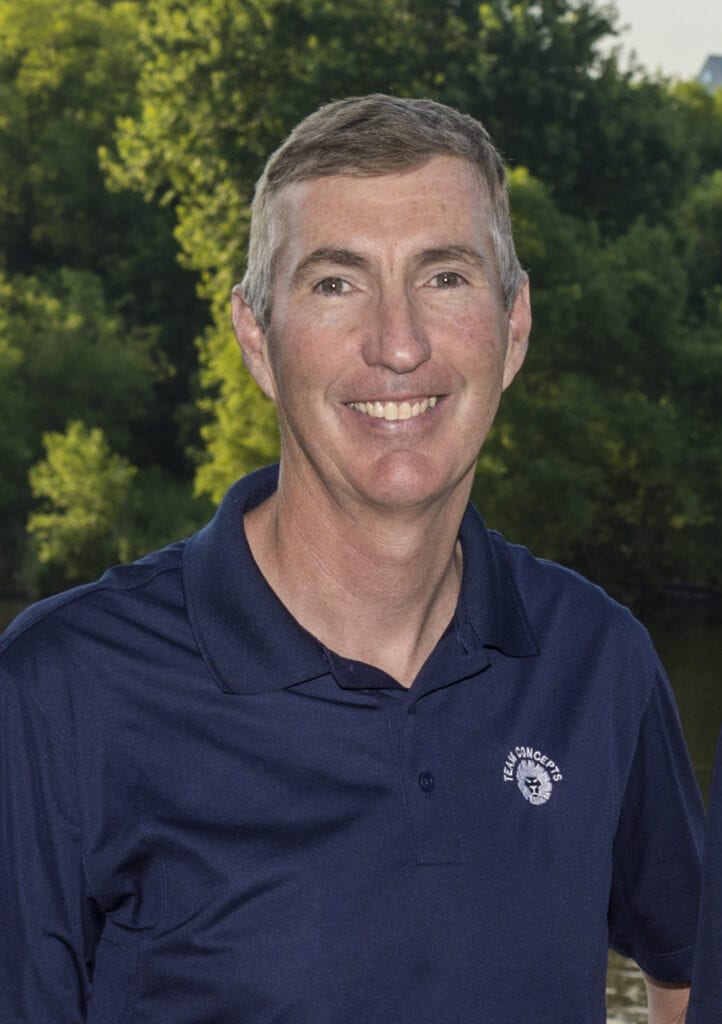
NSN: As sports fans, I think we can all appreciate the idea of competing in a team sport. And when I was writing the feature on the King’s Cup, I came to the realization that rowing in particular is unique even as team sports go. So today, I wanted to talk about your experience in rowing and the role it played in your career. Let’s go ahead and get started right now. Okay?
DL: Absolutely. Actually, as an aside, I was at the King’s Cup last year when Navy won. And I will just say that it was such an overwhelming experience as we were watching along with tens of thousands of fans in Henley, England. And I was crying. Because not only it was it such a wonderful race. It was also because it vaulted Navy to where I think Navy has always belonged, which is in the international sphere for rowing. This was an amazing effort against frankly, a lot of national team rowers from Germany. It was awesome.
How It All Started
NSN: So one of the things I wanted to find out regarding your rowing experience is when were you first introduced to the sport?
DL: I started at ten years old. My dad was an Olympian in 1940. Of course those Olympics were canceled because of the war. Anyway, he brought me down to Boathouse Row in Philadelphia threw me into a coxswain’s seat. I didn’t know what a coxswain was and I didn’t want to be there. I was too busy playing with my soldiers under a pine tree. Finally, I told him if I’m going to do this, I’m going to row.
So he put me in a rowing shell. I was in a single up until I was 18, and when I got to the Academy, I went into a crew for the first time. And after that, I didn’t want to be a single sculler any more. I had felt what it was like to be in crew with seven others trying to match each other. That was an amazing experience; incredibly different and I wanted to be that. And that’s how it all started.
NSN: Did you play any other sports? And what made you choose rowing?
DL: I played basketball and baseball. But pretty much from the time I was 14 on, it was mostly rowing. There was something about it that was unique. It wasn’t just because of the family background, which was very extensive. There was something else. But sports, I think as a metaphor, is unbelievably powerful in exposing people to what it means to be a part of something bigger than yourself. There’s nothing like it.
The Navy Rowing Experience
NSN: So now we can jump into your rowing experience at the Academy right now. I was just kind of curious what you remember most about that and what your biggest takeaway was from that experience?
DL: Wow, there’s a lot to remember. When I came in plebe year, I was a little undersized. I was a solid lightweight at 145 pounds at the Naval Academy Prep School. When I got to Navy, I was 165 and Coach Clothier made me a heavyweight. We started Plebe Summer with 150 kids, and it was brutal.
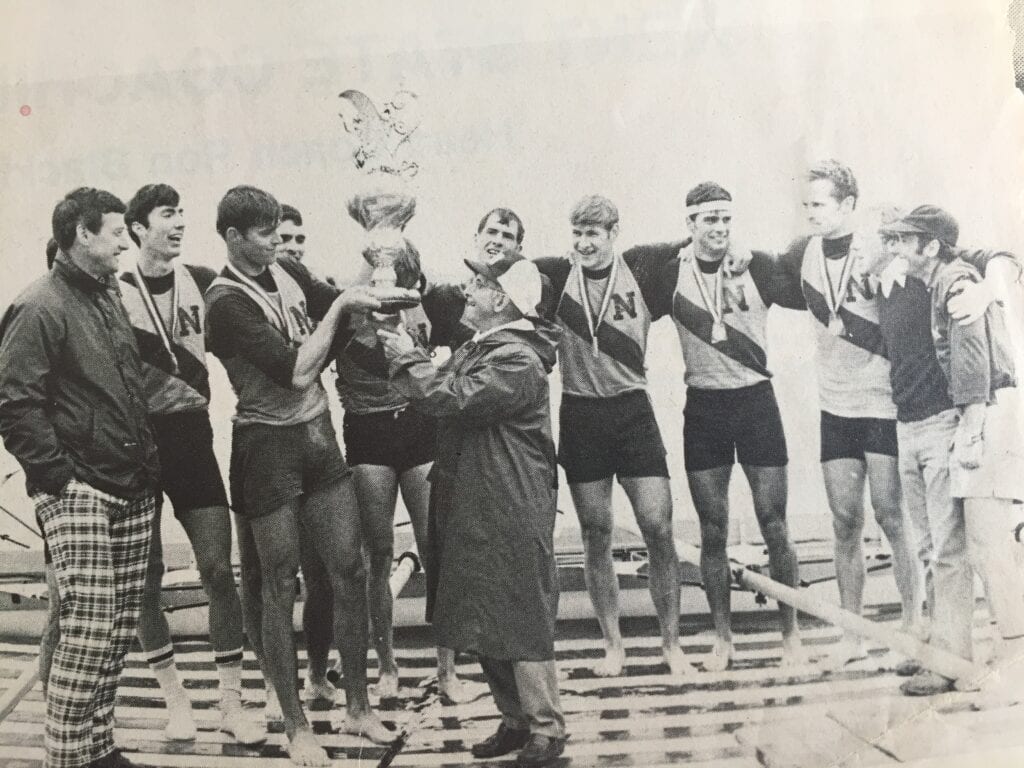
But the one thing I remember was that my coach, Ken Dreyfuss was 100% positive. He was always smiling and happy. His demands however, were . . . excessive. But they were doable. As an example, he started us all out by doing 2 pull-ups regardless of how many we could do at the time. Then we increased the number incrementally for three months. The team that he had three months later was far different than the one that began the summer. From that experience, I learned how to handle this growth of people’s potential. Coach Dreyfuss was amazing at that. It was an incredible plebe year.
We moved into higher expectations with the varsity Navy Rowing team. But I can tell you that Coach Clothier had a real eye for how people fit together. This is crucial to building a strong team. And there were some gorgeous crews. I could talk all day about how it felt to be part of them. So . . . stop me when you want to.
After Annapolis
NSN: That’s a great start. So when you think about that rowing experience you had at Navy, how did that shape your development as a naval officer?
DL: Well, there’s no question it was key. The first thing it did was give me confidence. And it gave me a sense down deep that I could do the things I was expected to do as a naval officer. There are very high expectations for officers coming out of any academy. I think that is especially true of Navy because of the unique nature of what we do.
Rowing elevated expectations from a moment to moment basis because you had to deal with pain. In fact, you had to deal with an enormous amount of pain over an extended period of time. So you couldn’t just say, “Well, I’m done right now.” And you couldn’t just stop rowing. You were with seven other people and a coxswain who were dependent on you for your best effort. And I think we took that into the fleet right away. So it was discipline, and commitment to the moment, and commitment to each other. And it was also the absolute belief in the mission and what we were engaged with as a group.
Dan on the Concept of “Swing”
DL: More than anything, I think when you get in a crew, it is the strength of the approach to the alignment. You have to align. That means you have to know the strengths of everybody that surrounds you. And you have to be aware of what’s going on in that environment. Then you have to be willing to change your own behaviors and play to your own strengths in order to lock in with everyone else and maximize the collective output. Ultimately, that’s what it’s all about.
It’s important to know that we never lost our individuality. That’s not what rowing is about. You don’t lose your individuality just because you are meshed in an amazing experience as a group. You are in fact exalted because you assume the power of the team as your own. That’s what happens when things really go well. It’s a concept called “Swing.”
Serving and Competing
NSN: When you were on active duty, you also competed internationally. Could you share that experience with us?
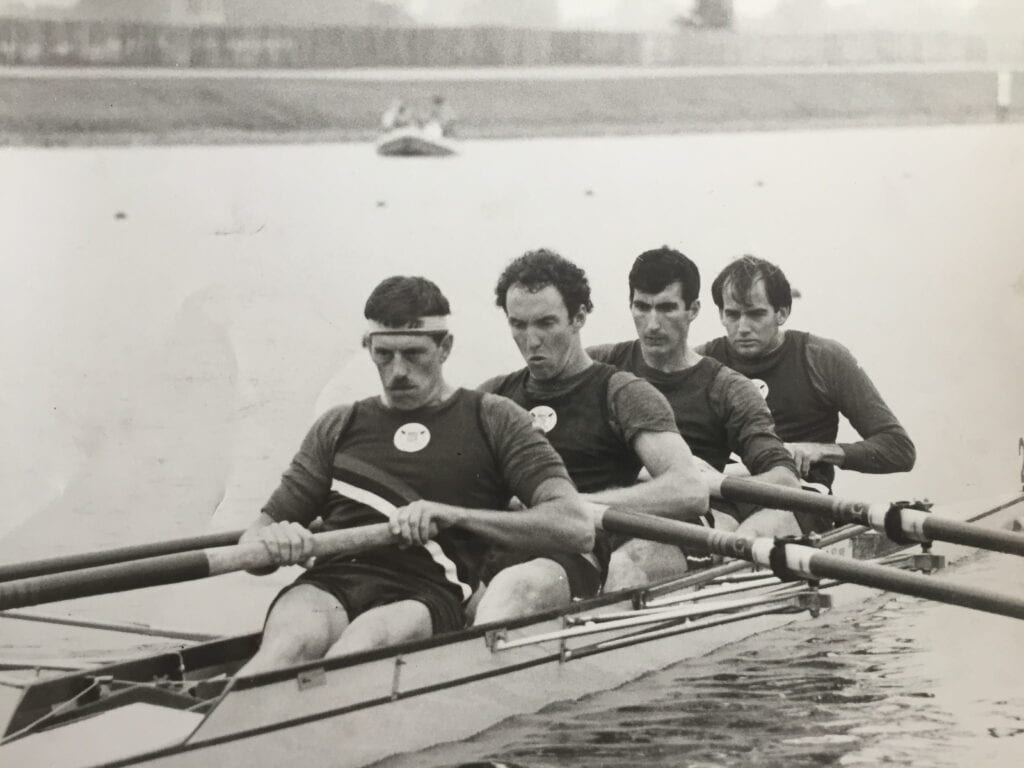
DL: Yes. The Navy was very good to me. I reported to the national training camp in Madison, WI right after graduation. I qualified for the first eight and rowed from the bow seat. We competed in the World Championships in Munich, Germany and won a bronze medal. It was first medal that national team won there in seven or eight years. That was great.
Now, I served on a ship the entire time this was going on. So I rotated back and forth the whole time. We won the gold medal at the Pan Am Games in ’83. And in ’86 we competed in the World Championships in Nottingham, England in the fours and won the gold medal there as well. It still remains the only time the U.S. team has won that particular event. Finally, in 1988, I qualified for Seoul Olympics with Bob Espes in the twos. But he became ill after we won the heat. And that was it. I also rowed at Oxford in ’86-’87. None of that happens without the experience I had at the Naval Academy.
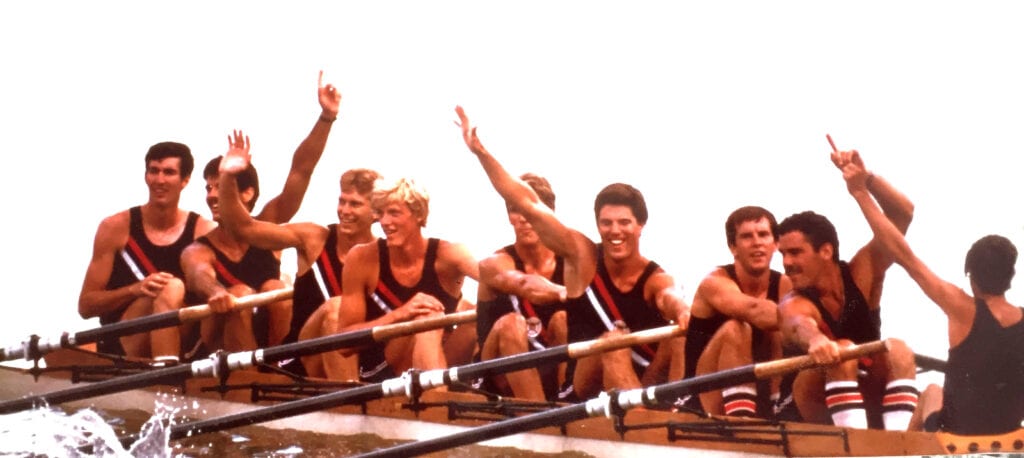
Dan’s Coaching Experience
NSN: After, you finished competing, you went into coaching. Was that always planned or did it evolve over time?
DL: That evolved. I always liked coaching because I am part teacher. That’s what we’re doing here at Team Concepts. We’re creating and leading high performance teams through coaching and teaching. So I did coach at Stanford, Oxford, and Navy. I also coached at Georgetown and Drexel. I really enjoyed it because I coached freshmen all the way to the national teams. The biggest joy was not the winning. That definitely helped, of course. But it was because I was part of something bigger. The team totally committed to each other. And they were giving the best that they truly had, not the best that they thought they had. When that happened, good things occurred. I enjoyed that experience the most about coaching, and I still do.
NSN: To our readers: Here is the link to the Dan Lyons interview so you can listen to it in its entirety. I say this because he is an excellent story teller, and he relates a fascinating experience he had at Oxford. It involved all aspects of leadership. There is no way I could ever do it justice by transcribing it, so I encourage all of you to check it out. You and go directly to the 17:25 mark to hear the story.
Leveraging the Passion For Rowing
NSN: Okay, so we’ve come to a point where I want to get into what you’re doing now. At what point did you start thinking that you could take this idea of teaching leadership and team building and incorporating rowing into that whole concept? When did that idea first start to grow?
DL: It was 1992 when I was back coaching Navy’s rowing team. I was reinvigorated in terms of my view as to what was possible. I also looked at the interest those in the U.K. had towards rowing and applied those lessons directly to my own life. So I got together with a couple of people including Chris Clark from Oxford. And we started the company in ’92. I eventually partnered with Rich Mahoney from Cambridge. We worked together until 2000 before he went off to form another company, and we continued from there.
So our company is 25 years old now. We use a concept called metaphorical training. There is a heavy academic element with everything we do. The objective is to help people to learn how to create high performance teams. And then they lead them to a well-defined objective. It’s no different than in sports isn’t it? What we’re essentially teaching is how to take a team through a season and how do you win. So we have to define exactly what that means to people.
Now, how are we going to do that? First, we’re going to talk to you a little bit. And then we’re going to tell you some stories. But we’re really going to have you experience it, either virtually nowadays, or live. And to me, one of the best ways to do that was to put you in a rowing shell. We’re going to put you in with some experienced people because we’re not going to take eight people with no experience and put them in a rowing shell because that would not turn out real well.
How The Program Works
DL: So you put six people who have never done it before with two instructors. And you begin to align around a common objective. You give them some shirts and hats of the same color and you put them against other crews of the save caliber. Then you go out and coach them to understand where they have to align, what they have to do to align, and what it means to be aware of the environment. This can be the work environment or the business environment. It also means understanding how your own personal environment is interacting with everybody else. It’s all about how you put all of these ties that bind us together to where energy is flowing as a whole. You’re giving and receiving and it’s awesome.
And we have other programs as well. Besides rowing, we have sailing and golf. We also do games that we’ve made up.We do anything that metaphorically will get the points across. But the points are always the same. So that’s kind of where we are right now.
Dan On Winning the Crowd
NSN: That sounds great. So let me ask you this. You’ve brought in some groups before, and maybe the buy in isn’t 100% there from everybody. Could talk to how you create that mind shift to the point where they were won over by the time the workshop was finished?
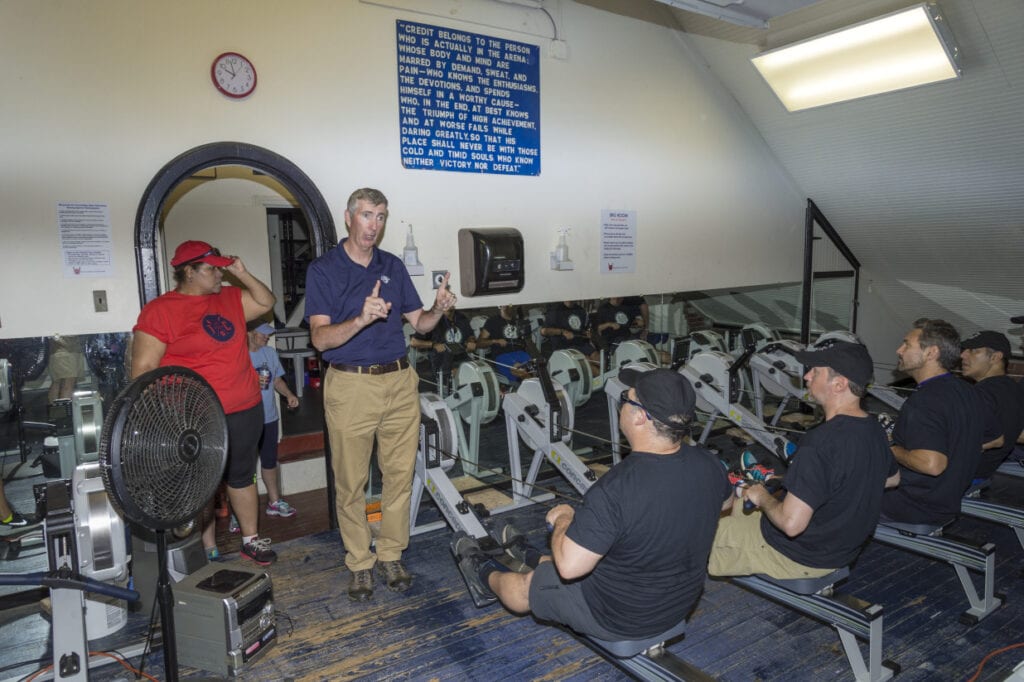
DL: Yeah, that’s a great point. And I will say that for our Navy audience that the guy that I remember that gave us the most problems was a Navy guy. He was the only one I never convinced. For whatever reason, he had such high expectations for himself, that he never really listened to what was going on. I had a long talk with him and after a while, I realized that this wasn’t going to work.
But I mention that because since we have been doing this, we’ve had thousands of people that have come through these programs. Have they come in with complete buy in from the very beginning? Absolutely not. So to answer your question, here is what we do.
We bring the group in. Then we tell them what’s going to happen over the course of the workshop. But first we let them know that we’re going to break them up into teams by counting off randomly. Then they will have the opportunity to create their own team. They had to come up with a team name that’s all about the things they have in common. After that, they had to come up with a motto that supports the team name as well as a goal for their period of time together. All of these things go on a team banner. Each group only had 20-30 minutes, and by the time they were done, they were committed to each other.
The Power of the Program
DL: Now, there was one time when we did not follow that process. It was with a business school client up in New York. We talked to them for a couple of months about this. They had supposedly gone over the academic phase in the classroom ahead of time. They wanted to reserve the whole day for rowing. We were working with 150 employees from Deutche Bank. I told them that I wasn’t sure what’s going to happen if we didn’t follow the usual process. But I said that we should.
They were insistent on moving forward. So we skipped that classroom session. We put them into teams and gave them shirts and hats. Then we put them in the boats. And about half way through the day, about 20 people just disappeared. They just left. I still don’t have any idea where the hell they are.
So keep that in mind. For the previous 15 years we never had anybody leave our programs and we were running about 80 – 90 of them each year. So what happened this time? Very simply, they never broke down the barriers between each other. There was no trust established because there were no expectations. So they could keep distanced from each other. That’s why we have to continue to remind each other that the only way we get each other’s best is if we trust each other. And the only way we’re going to do that is if we share and commit to each other. So that banner development exercise was key to establishing that trust.
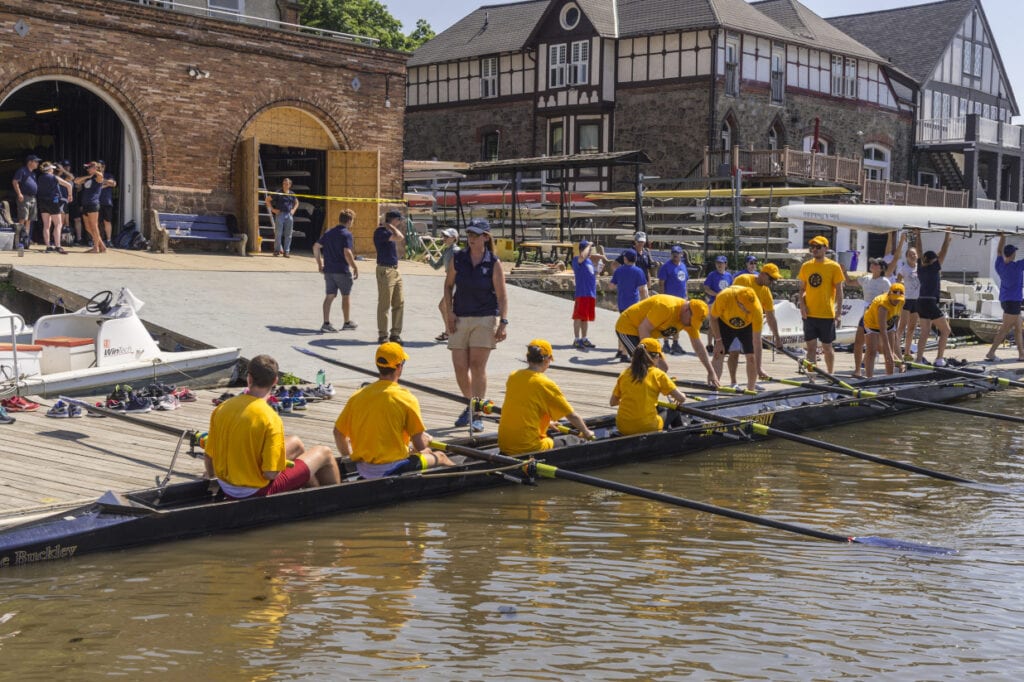
Closing Thoughts
NSN: Okay Dan. So I have one more question for you. And it relates to the path forward for your company in light of what we are dealing with right now. Can you share a short term goal and a long term goal that will be really important for Team Concepts as we continue working through the current situation?
DL: For the short term goal, I think it’s important for all of us to remember why we are here. We’re here to help people, to come together, to be better than themselves, and to value them in that experience. So our first goal is for us to take our very good virtual programs and a get them out to as many people as we can so we can help them.
Our second goal is to make sure that in the next 12 – 18 months while this vaccine is developed and distributed, we take what we have learned virtually and expand it. Then we can fold that into our live programming. I’m looking forward to it. I think there is tremendous opportunity here to have a live program as a catalyst. From there, we can use the virtual programs to replicate our sports experience and our Naval Academy experience. Through coaching, we will have the ability to reach people in positions of need and positions of responsibility day after day and week after week. We want to give as many people as possible the opportunity to come together and help each other.
Wrapping Up
NSN: Okay, that looks like it just about does it for us, Dan. I really appreciate you taking the time to meet with me. Thanks again for sharing your Navy rowing experience and how it impacted your professional career. I’m looking forward to getting this out to everyone, so once again, I really appreciate it. Thanks a lot.
DL: Well, thank you Karl. I know this is hopefully the first of a long series of conversations with Navy athletes and grads coming here to share their experiences and the impact Navy sports have had on their lives. Good luck to you moving forward.
NSN: To our readers; My conversation with Dan Lyons was a great experience. You’ll see that the interview was close to 40 minutes long, but we talked for nearly an hour. And I will tell you that throughout the interview, Dan’s passion for rowing is clearly evident from start to finish. He is living proof of the saying, “If you do what you love, you’ll never work a day in your life.”
Until next time . . .
Thank you Navy Sports!
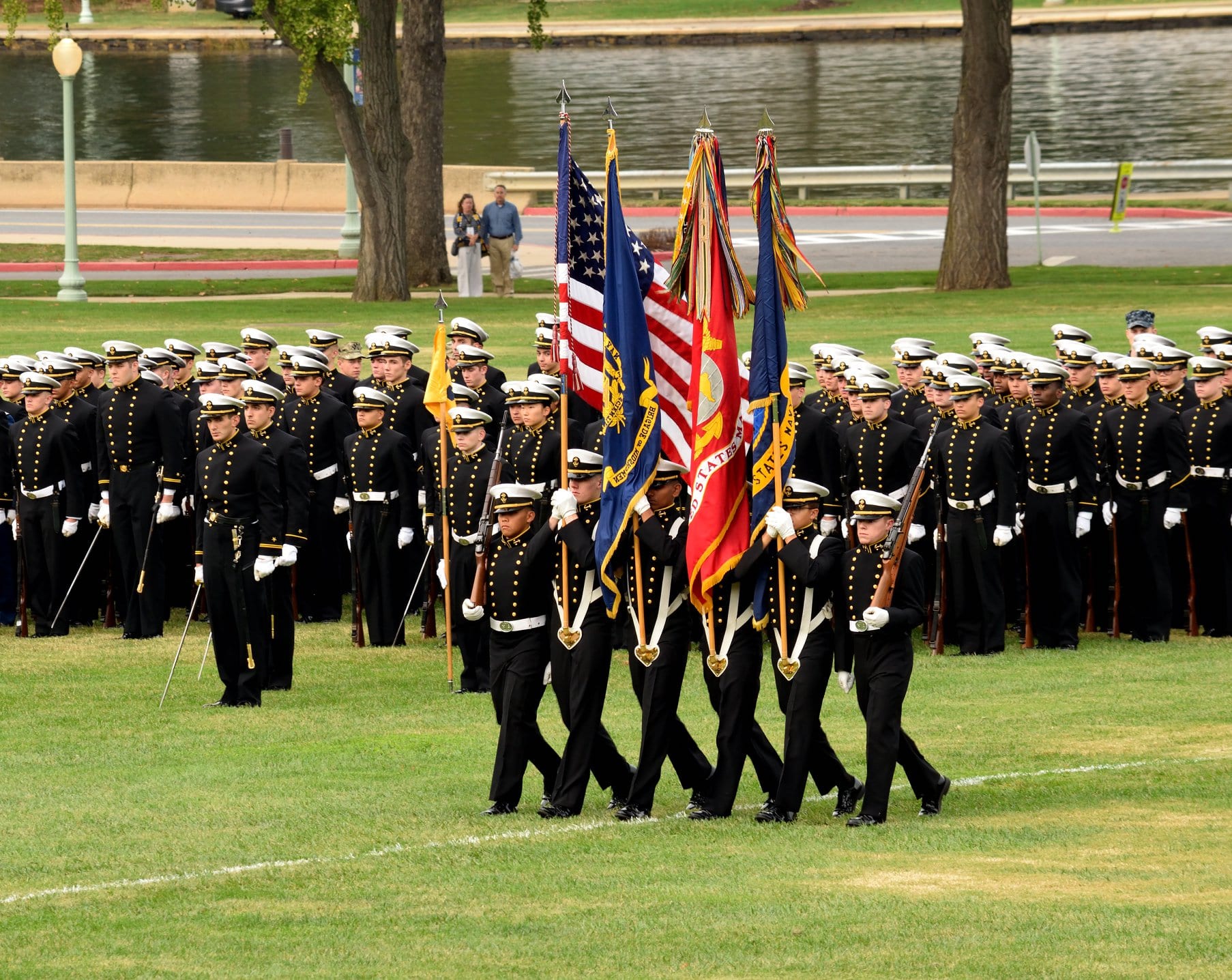
My sincere thanks to Scott Strasemeier, Senior Associate AD for Sports Information at the U.S. Naval Academy for granting permission to use images and video from the Navy Athletics media library. All photos used from this source will be properly credited in the caption. The only exception would be if the photo is used as a feature image where no caption is visible.
Follow Us
Share this story!
Related Links
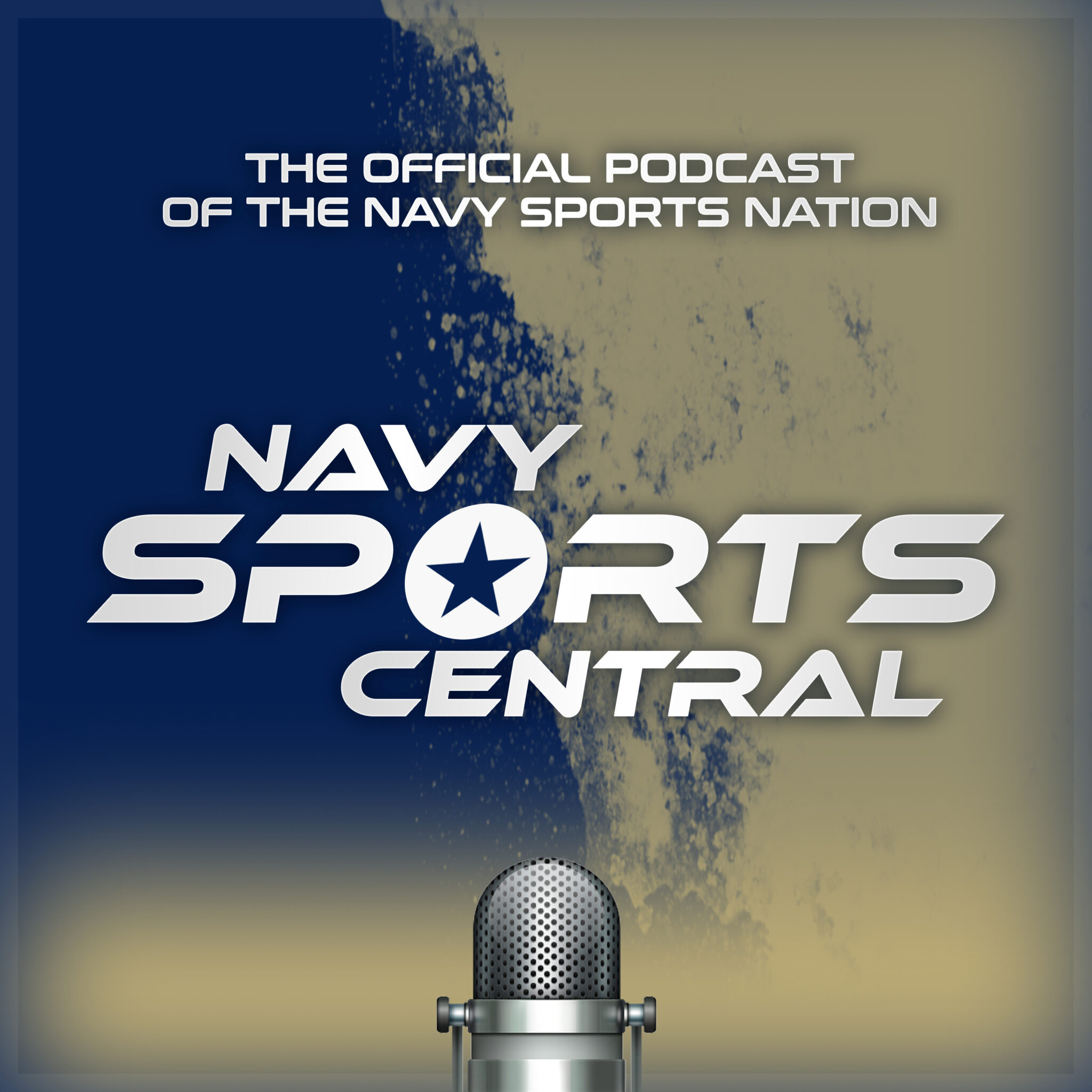
Shop for Merchandise
Featured Products
As an affiliate partner, Fanatics shares a small percentage of each sale through these links with the Navy Sports Nation which will be used to maintain the website. Thanks for your support!
Did you know…
Navy and St.Mary’s are the only two rugby programs in the country that have produced two Rudy Scholz Award winners. The award for the collegiate rugby player of the year was first given out in 2016.
Connor McNerney was the Naval Academy’s first recipient in 2018. This year, Lewis Gray earned that honor. It was a fitting end to his outstanding career.
Favorite Books
Click on the images to buy these two “must have” books for all Navy football fans. As an Amazon associate, I earn from qualifying purchases.
cRA Div. 1 National Championship Highlights
Karl Darden
I am a Navy veteran and a graduate of the U.S. Naval Academy. The idea to start this blog actually came from my classmates. I hope you enjoy reading this content as much as I enjoy writing it. Go Navy!! Beat Army!!
